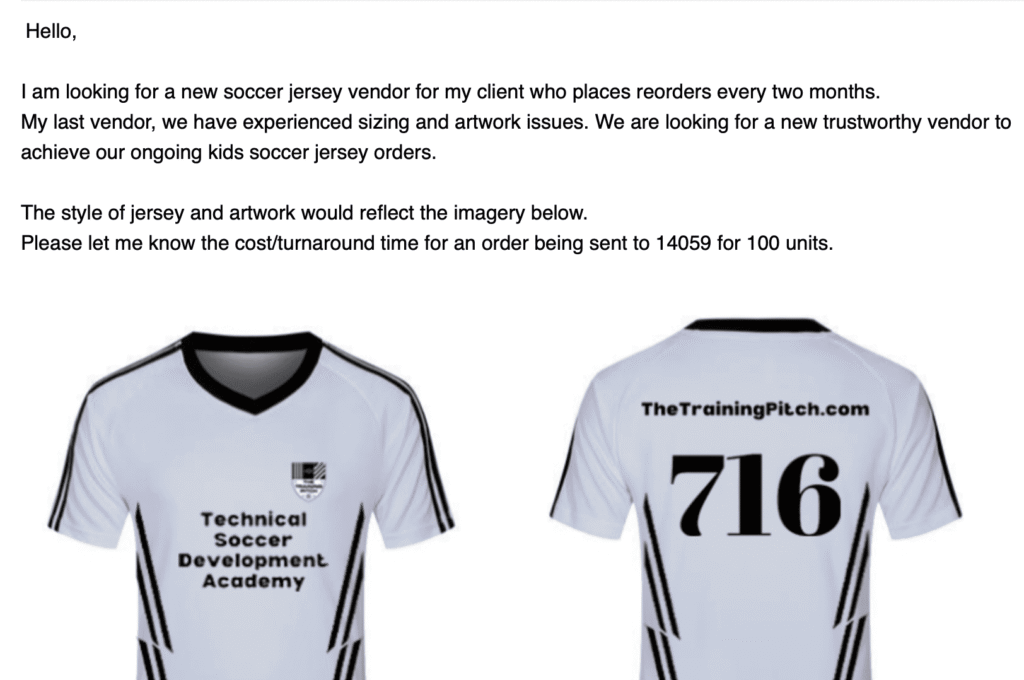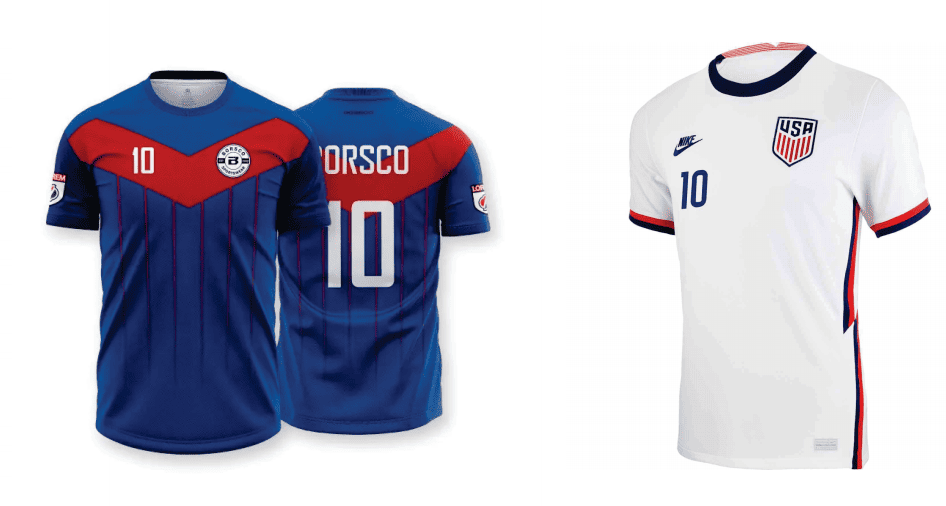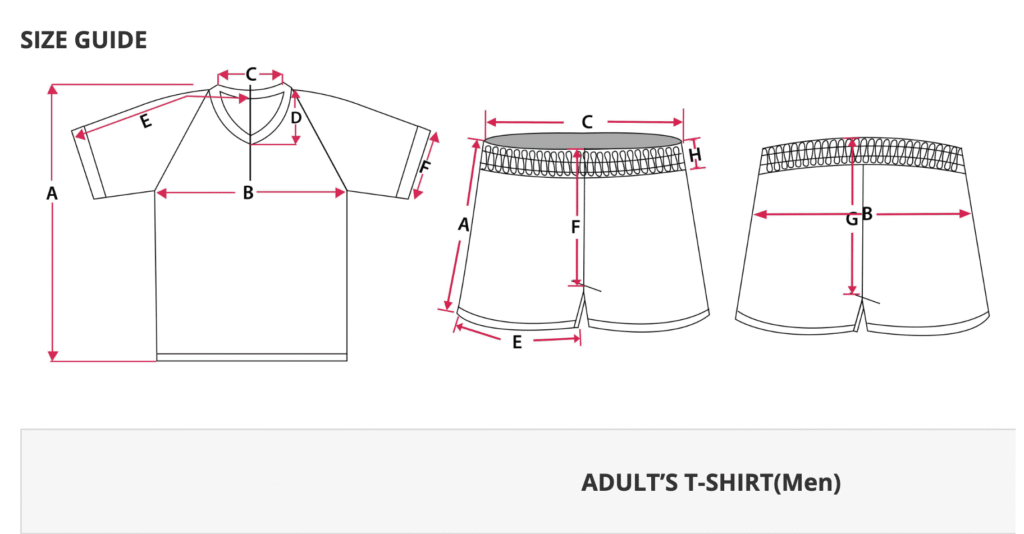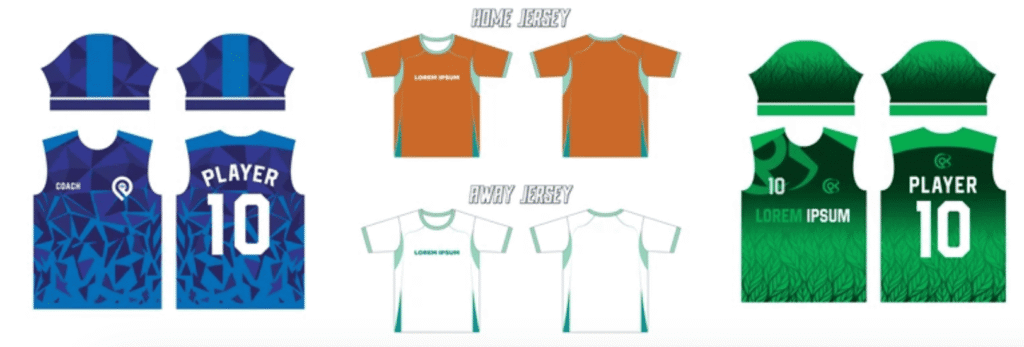SPORTSWEAR
How to Ensure Correct Sizing for Custom Sportswear: A Comprehensive Guide
(Based on real-world experience, including a client’s sizing complaint)
This experienced buyer encountered a sizing complaint from his end-users.We recently saw a screenshot from a client who regularly purchases custom soccer jerseys for a local football training academy. He places orders every quarter. Yet, even this experienced buyer encountered a sizing complaint from his end-users. If a small order quantity already caused such headaches, imagine the disaster with a larger one!
When it comes to custom jerseys, the easiest place to make a mistake isn’t the fabric, but the garment’s size. For instance, with sublimated jerseys, the fabric is typically polyester—either plain weave or mesh, with or without visible holes. As long as the fabric weight (GSM) is correct, there’s usually no issue. However, if the sizing is wrong, it’s a disaster, much like "one bad apple spoils the whole barrel." Therefore, meticulous attention to sizing details is paramount in custom teamwear production.
1. Understanding Sportswear Sizing Categories
First, let’s break down jersey sizing. It’s generally divided into kids’ (youth) and adults’ sizes:
- Kids’ Sizes: Typically XS, S, M, L, XL (Xsmall, Small, Medium, Large, Xlarge).
- Adults’ Sizes: Typically S, M, L, XXL, XXXL (XXL and XXXL are also written as 2XL and 3XL).
To clearly differentiate, many clients add:
- "Y" (for Youth) before kids’ sizes: YXS, YS, YM, YL, YXL.
- "A" (for Adult) before adult sizes: AS, AM, AL, AXL, A2XL, A3XL.
- Note for Spanish-speaking countries: Their "Large" size is often denoted as "G" (for Grande), not "L".
Even with these clear distinctions, instructions to factory workers must be precise. Workers often don’t understand English well and can inadvertently mix up youth and adult sizes. Many retail clients also require barcodes on hang tags. This demands extreme care from the factory, as teamwear involves numerous sizes, and each size can have multiple colors. The production department must meticulously record the client’s size and color specifications, double-check every size, and clearly label hang tags before handing them to the workshop supervisor, who then instructs the assembly line and packing team leaders. Without this level of diligence, youth and adult sizes can easily be mislabeled. Based on experience, hang tags are often color-coded by size for easier visual differentiation.
2. What are the Actual Measurements for These Sizes? (Size Specifications) Are Sizes the Same Across Asia, Europe, and the USA/Canada?
If you simply provide a factory with sizes like XS—XXXL, Chinese factories will typically ask for the specific measurements for each size (e.g., chest width, garment length for tops; waist circumference, pant length for bottoms). This can be confusing for clients, especially those sourcing promotional gifts who aren’t from the apparel industry. Why? Because sizing requirements differ from country to country. This is precisely why the client mentioned at the beginning faced sizing issues.
Generally, we categorize sizes into:
- Asian Sizing (for Southeast Asian countries, etc.)
- European Sizing
- American Sizing (USA and Canada)
The measurement range for XS-XXXL varies significantly across these regions:
Asian Sizing < European Sizing < American Sizing
If a client from the Americas orders custom jerseys, you cannot use European sizing standards. Many Chinese factories might say, "Our sizes meet export standards, don’t worry." But you must follow up: "Export standards for which country? Which countries do you usually ship to?" While the letter labels (S, M, L) might be the same, the actual garment fit can be drastically different. Be very cautious.
A Cautionary Tale:
I once heard a story. Client A wanted to source T-shirts and inquired with Factory B. Factory B boasted, "We’ve exported 500,000 pieces of this T-shirt model; it was specially produced as a promotional gift for an election campaign. You won’t find this price anywhere else!" Indeed, the price was incredibly low, and Client A was tempted, as it was 20% cheaper than his usual procurement cost. Without much thought, impressed by the factory’s apparent strength, he was ready to place an order. Fortunately, he had also contacted us. He asked why our quote was 15% higher than Factory B’s, showed us their price, and said he’d go with them if we couldn’t match it. I told him, "At that price, we’d buy the product from you!" and advised him to verify the material and sizing. Thankfully, this client had some purchasing experience and took our advice to check samples. We prepared samples for Client A based on his country’s corresponding size standards.
Later, Client A chose us over Factory B. Once we developed a good relationship, during a meal, I asked him why he chose us. He scrolled through his Instagram and showed me a video. He laughed heartily, saying, "Our fitting model had a terrible time! He managed to squeeze into Factory B’s T-shirt, but it burst with a ‘crack!’ He couldn’t stop laughing; the way the T-shirt fit was hilarious." Afterward, he asked Factory B why their T-shirts were so small. The salesperson eventually told him the truth: they were promotional T-shirts for a presidential election campaign in Indonesia, not for his country, the USA. Client A also had his colleague try our samples and confirmed there were no sizing issues because we made them according to his country’s standards. For the same correct fit, Factory B’s subsequent price was actually higher than ours.
So, don’t just look at the price.
Generally, an adult Asian L size shirt might have the length and width of an adult American S size. Of course, other aspects like the neckline, cuffs, and armholes will differ. You cannot simply interchange them. Please note I’m referring to adult sizes here; for kids’ sportswear, the differences are usually less significant.
However, within European sizing, there’s also French sizing (FR). For athletic shoes, French and European sizes differ. So, even among European countries, distinctions exist.
Furthermore, the sizing for jackets and T-shirts can be worlds apart. Jackets are generally looser.
3. How to Get Sizing Right? How to Know the Specific Measurements for Each Part?
- Method 1: Check Official Brand Websites. You can search for the websites of major brands available in your region (e.g., Adidas, Nike, Under Armour) and check their size charts.
- Method 2: The Authoritative & Direct Way – Visit Local Brand Stores. For sportswear, benchmarking against leading brands like Adidas, Nike, Under Armour is a surefire way to get it right. (Note: My Canadian client, Linda, mentioned that in her local market, Adidas doesn’t label adult XS; adult XS is considered youth YXL.)
- Method 3: The Simple & Fun Way – Check Your Own & Colleagues’ Sizes. My clients often tell me, "Try it on. Try on more."
Is having the measurements enough? Not quite. You also need to pay attention to your measurement method. Different factories and their pattern makers may have different ways of measuring. So, when customizing sportswear, you must provide a diagram indicating precisely where each measurement is taken (e.g., "chest width measured 1 inch below armhole, seam to seam"). This makes it very simple and visual for workers to understand.
Unless it’s a very small quantity, a tight deadline for an event, we strongly recommend clients send physical size samples. This is the best and simplest method. How to send size samples? First, find a reliable factory. If it’s sportswear, find one specializing in sportswear. This way, you can confidently send your samples. A garment style often has many sizes, each with specific measurements for different parts. If you have samples for all sizes, send one of each. Alternatively, you can send "jump sizes" (e.g., for XS, S, M, L, XL, 2XL, you could send S and XL, and the adjacent sizes can be graded proportionally). If you only have one size sample, send at least an M (Medium), as it’s the middle size. Bulk orders also typically have the highest quantity in M, with fewer pieces in the smallest and largest sizes.
4. Can I Skip Samples if I Have a Mockup?
Some clients might say, "Isn’t this too much trouble? We have our own factory and can provide a sizing mockup with all the pattern pieces."
However, even with such mockups, errors can still occur. Why?
Based on our experience, there’s a difference between template dimensions and sewn garment dimensions. This is because manufacturing requirements and techniques vary. The client’s local factory’s production process and a Chinese factory’s process are not always identical. Therefore, the final assessment must always be based on the finished garment. Even a tiny difference in technique can lead to discrepancies.
5. What is the Sizing Tolerance in the Apparel Industry?
The general industry tolerance for garment dimensions is ±1cm. Some strict orders may require ±0.5cm, while less strict ones might allow ±1.5cm. These standards must be written into the contract and clearly communicated to the factory. After all, clothes are still made by hand. Even with identical patterns, each worker’s technique can lead to slight variations.
6. Which Parts of a Jersey Require Special Attention to Sizing?
- Sports Tops: Pay close attention to chest width, garment length, neck width, and armhole. For necklines with little elasticity, also consider head circumference.
- Sports Shorts: Waist circumference and crotch depth (front rise, back rise) need extremely careful attention. Shorts with the same waist measurement can have different hip measurements, leading to vastly different front and back rise requirements.
- Long Pants: For long pants, beyond the obvious inseam (length), you also need to pay close attention to the waist, hips, crotch (front/back rise), and don’t forget the leg opening.
These are common areas for errors. A mistake in these areas is a critical flaw. However, for sports shorts with elastic waistbands and drawstrings, a slightly larger deviation in waist measurement might not be a major issue due to the elasticity and adjustable tie.
In Conclusion: Detail is King
After all this, you might feel that apparel production is quite complex. Indeed, it’s a meticulous undertaking. We’ve written so much just on the issue of sizing, and there’s still more that could be said. If we were to delve into fabrics and accessories, we could talk for a thousand and one nights (and then some!).
That’s why we treat every order with the utmost care, "as if treading on thin ice." We focus on details because details determine success or failure. If you don’t have the time to screen suppliers, you can turn to us. We are experts in this field. We can help novice buyers, especially those not well-versed in apparel, avoid many unnecessary troubles. You place the order; we’ll handle the production.
Our factory managers or product specialists are ready to address your concerns regarding fabric, printing, workmanship, and more. We will provide one-on-one communication to ensure your custom apparel journey is smooth and successful.







